How to finance home renovation can feel like a daunting mountain to climb, but don’t worry; you’ve got options that fit all kinds of budgets and dreams. Imagine turning your outdated kitchen into that Pinterest-worthy space you’ve always wanted, or finally adding that luxurious bathroom sanctuary you deserve. Statistic time: on average, homeowners spend around $15,000 to $30,000 on renovations, and projects like kitchen remodels can increase your home value by about 80-90% of what you put in. That’s real money, and if you’re planning to tackle a few changes, you’ll want to ensure you’re not just putting cash on the table without a solid plan.
Consider this: if you’re sitting on a home equity of $100,000, maybe it’s time to leverage that to finance your renovations. Many homeowners choose a home equity line of credit (HELOC), allowing them to borrow against their equity, often at lower interest rates than personal loans. Or perhaps you’re looking to go the route of a renovation loan that rolls the costs into your mortgage. With a median time for homeowners to stay in their home being around 13 years, these improvements can not only enrich your living space but also boost resale potential. Let’s dig deeper into how to make those renovation dreams a reality without breaking the bank!

Strategies for Affordable Home Financing
When it comes to financing your home renovation, finding affordable options is crucial. It’s all about leveraging the right financial products and understanding the market. I’m here to share some strategies you can implement to keep your costs manageable.
Leverage Government Programs
One effective strategy is to explore government-backed loans. Programs like the FHA 203(k) loan allow you to finance the purchase and the renovation of your home with a single mortgage. Did you know that with an FHA 203(k) loan, you might only need as little as 3.5% down? This can significantly reduce your initial financial burden.
Home Equity Solutions
Using your home equity is another great way to finance renovations affordably. Home equity lines of credit (HELOCs) typically offer lower interest rates compared to personal loans. On average, HELOCs have rates around 4.5% — nearly half that of traditional financing options. By tapping into this resource, you can fund renovations while benefiting from potential interest tax deductions.
Compare Lenders
Not all lenders offer the same rates or terms, so it’s wise to shop around. Research indicates that using a mortgage broker can save you up to 0.5% on your interest rate year-on-year. Here’s a table demonstrating how comparing lenders can impact your overall repayment:
| Lender | Interest Rate | Monthly Payment (30 yrs) | Total Interest Paid |
|---|---|---|---|
| Lender A | 3.5% | $1,796 | $124,000 |
| Lender B | 4.0% | $1,908 | $138,000 |
| Lender C | 4.5% | $2,025 | $155,000 |
Consider Personal Loans
While not the first option for many, personal loans can serve as a reliable funding method for smaller renovations. These loans often come with no collateral requirement and can be obtained quickly. The average personal loan interest rate is around 10%, which, while higher than a HELOC, is still manageable for many homeowners.
Real-World Example: Renovating on a Budget
Take the case of Sarah, who wanted to renovate her kitchen. She tapped into a HELOC for $20,000 at 4%, allowing her to manage payments effectively. By comparing rates, she saved over $2,500 in interest compared to opting for a personal loan at 10%. This strategic approach enabled her to transform her space without excessive debt.
Practical Implications
Implementing these financing strategies involves understanding the depth of your renovation goals and timelines. I recommend starting by assessing your home’s equity and researching lenders with competitive rates. Don’t hesitate to reach out to a financial advisor for personalized insights tailored to your situation. Additionally, explore local and state-specific grants or subsidies available for home renovations.
Actionable Advice
- Always calculate the total cost of financing, including interest over the life of the loan.
- Keep an eye on your credit score; a better score may qualify you for lower interest rates.
- Consider leveraging a combination of financing options, such as a HELOC along with a small personal loan, for optimal affordability.
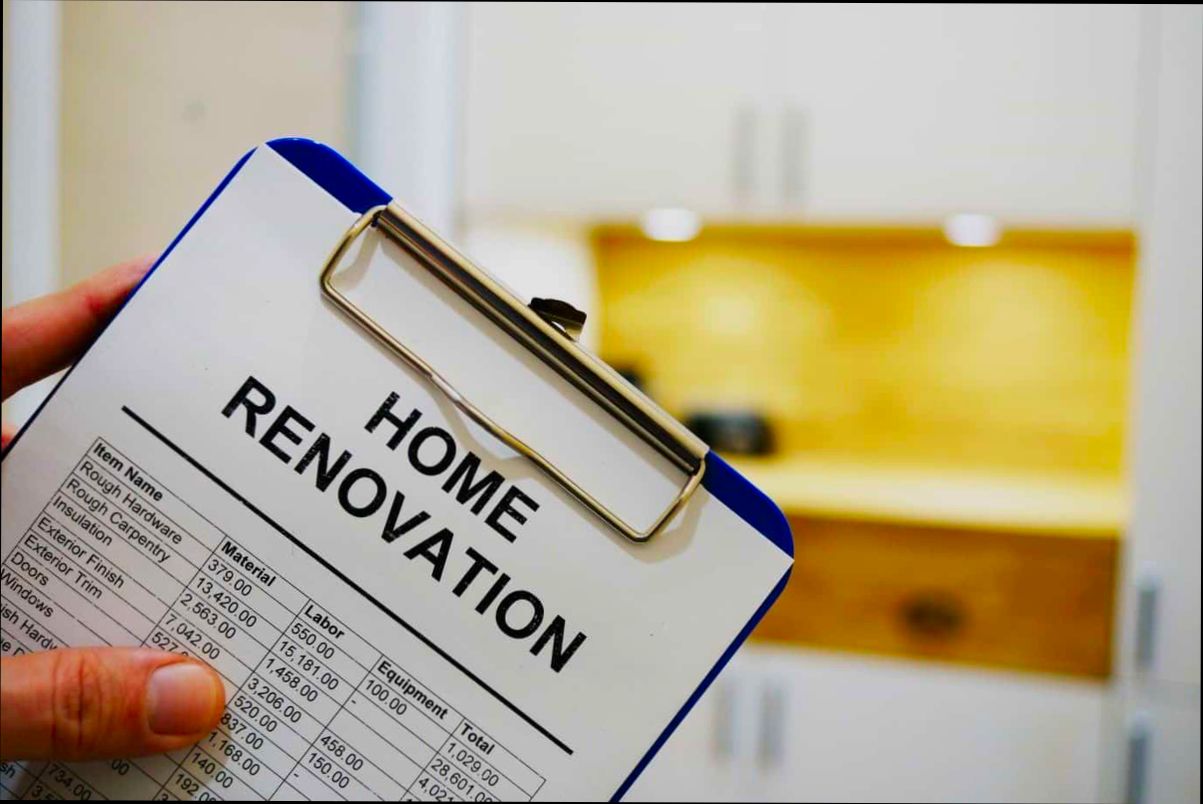
Understanding Renovation Loan Options
When it comes to financing your home renovation, understanding the various renovation loan options available can make a significant difference in helping you achieve your dream space. From leveraging home equity to exploring non-equity financing methods, it’s crucial to know what each option entails to make informed decisions.
Key Renovation Loan Options
1. Home Equity Line of Credit (HELOC)
- Allows you to borrow against your home’s equity, with limits up to 85% of your home’s value minus what you owe on your mortgage.
- Typically has variable interest rates, which can fluctuate based on market conditions, and you’re required to make minimum monthly payments on the amount drawn.
2. Home Equity Loan
- Similar to a HELOC but disburses funds in a lump sum, allowing you to borrow up to 90% of your home’s value minus what you owe.
- Generally offers fixed interest rates, making it easier to budget for monthly payments.
3. FHA 203(k) Loan
- Specifically designed for individuals looking to buy and renovate a home.
- Combines the purchase price and renovation costs into a single mortgage, which can be a great option for those buying a fixer-upper.
4. Personal Loans
- Unsecured loans that do not require collateral, making them a good option if you have little to no equity in your home.
- Interest rates can be higher than home equity options, but they don’t put your home at risk.
5. Credit Cards
- Using a credit card can be a quick way to cover smaller renovation costs, but be cautious of high-interest rates.
- It may be best for short-term projects or expenses that can be paid off quickly.
Comparative Table of Renovation Costs
| Project Type | Estimated Cost |
|---|---|
| Kitchen Remodel | $79,982 |
| Bathroom Remodel | $25,251 |
| Deck Addition | $17,615 |
| Solar Panel Installation | $20,552 |
| Roof Replacement | $30,680 |
| In-Ground Swimming Pool | $65,909 |
| Landscaping | $3,651 |
Real-World Examples
To illustrate these options, consider the following scenarios:
- A homeowner planning a kitchen remodel costing $79,982 might opt for a HELOC to leverage their home equity. This would allow them to draw funds as needed while having a lower interest rate than a personal loan.
- Alternatively, another homeowner interested in a bathroom remodel costing $25,251 could choose a personal loan. This option would provide the funds without tying the loan to their home but could lead to higher monthly payments due to less favorable rates.
Practical Implications for Readers
When considering a renovation loan, assess your current financial health, including your debt-to-income (DTI) ratio. Aim for your house payment and other debt to be below 36% of your gross monthly income; maintaining a lower ratio will help secure better loan terms.
Understanding the necessary documentation is also part of the process. Be prepared to provide:
- Bank statements
- Detailed project plans and cost estimates
- A home appraisal
- Proof of assets
- Proof of income (like pay stubs and tax returns)
Actionable Advice on Renovation Loan Options
Before you commit to any renovation loan, especially those tied to your home, calculate the total cost of any associated fees, including application fees, appraisal fees, and closing costs. Having clear financial parameters can help you choose the best renovation loan option that aligns with your budget and project needs.
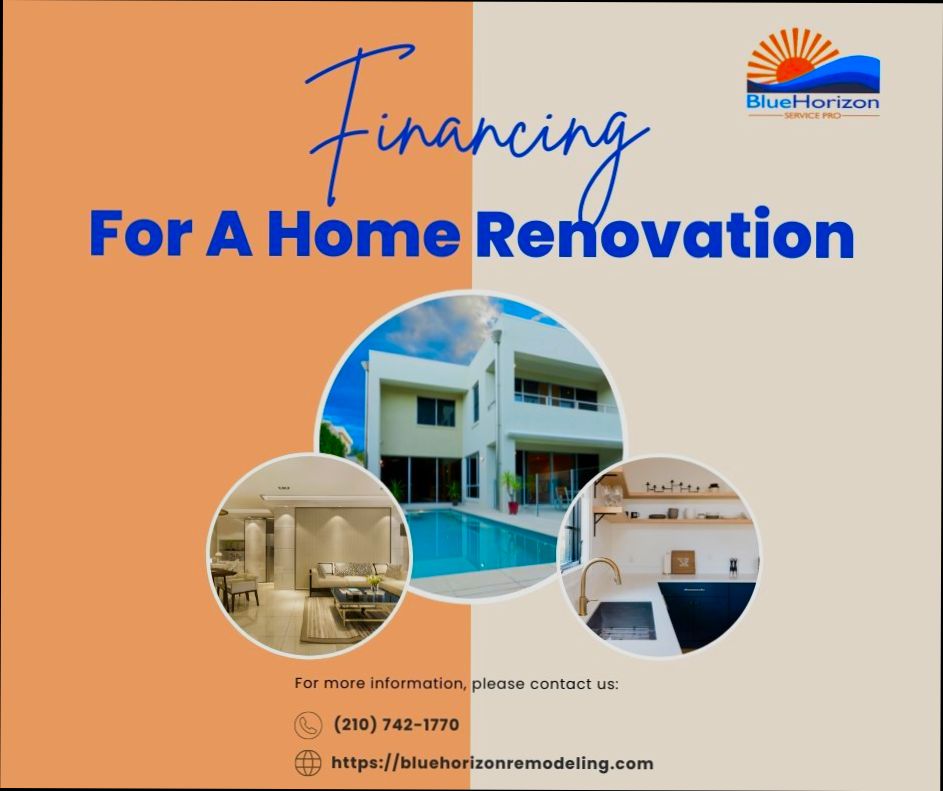
Real-World Examples of Successful Financing
When it comes to financing home renovation projects, seeing real-world success stories can be incredibly motivating. By examining how others have successfully funded their renovations, you can gain insights into strategies that might work well for you. Let’s dive into some compelling examples and data that illustrate effective financing methods.
Key Financing Success Stories
- Case Study: The Johnson Family
The Johnsons wanted to upgrade their outdated kitchen. By utilizing a combination of a home equity line of credit (HELOC) and personal savings, they secured a total of $50,000 for their renovation. They found that their HELOC rate was significantly lower than anticipated, at just 3.25%, enabling them to complete their project without undue financial strain.
- Case Study: The Evans Couple
After purchasing a fixer-upper, the Evans couple opted for a 203(k) loan, which allowed them to bundle their purchase and renovation costs. The total loan amounted to $400,000, including $50,000 allocated specifically for renovations. With an interest rate of 4.0%, they felt confident in managing their payments, which included the renovation costs distributed over the life of the mortgage.
Comparative Financing Analysis
| Financing Type | Average Rate | Approx. Loan Range | Notable Feature |
|---|---|---|---|
| Home Equity Line | 3.25% | Up to $100,000 | Flexible withdrawals |
| 203(k) Loan | 4.0% | $50,000 - $300,000 | Covers purchase and rehab costs |
| FHA 204(k) Loan | 4.25% | $35,000 - $75,000 | Focused on smaller, minor renovations |
Additional Real-World Examples
- The Baker Family
The Bakers secured a personal loan for $30,000 at a 6.5% interest rate to renovate their basement into a rental unit. They projected that their investment would yield a rental income of $1,200 per month, allowing them to recoup their costs within three years.
- The Martinez Family
The Martinez family took advantage of a state grant program for low-income households, receiving $15,000 to help fund energy-efficient upgrades to their home. This not only improved their living conditions but also reduced their monthly utility bills by approximately 25%.
Practical Implications for Readers
Understanding these real-life applications of financing can help you make informed decisions. Consider these strategies:
- Leverage various funding sources: As illustrated by the Johnsons and Evans, having multiple sources of funding can provide flexibility and security.
- Evaluate long-term benefits: Consider how the renovations will enhance your property value or generate rental income.
- Explore grants and loans that suit your needs: Be proactive in finding programs that may be underutilized in your area, as shown by the Martinez family’s experience.
Keep these examples and strategies in mind as you embark on your own home renovation financing journey. By drawing inspiration from others, you can carve out a successful path tailored to your specific needs and financial goals.
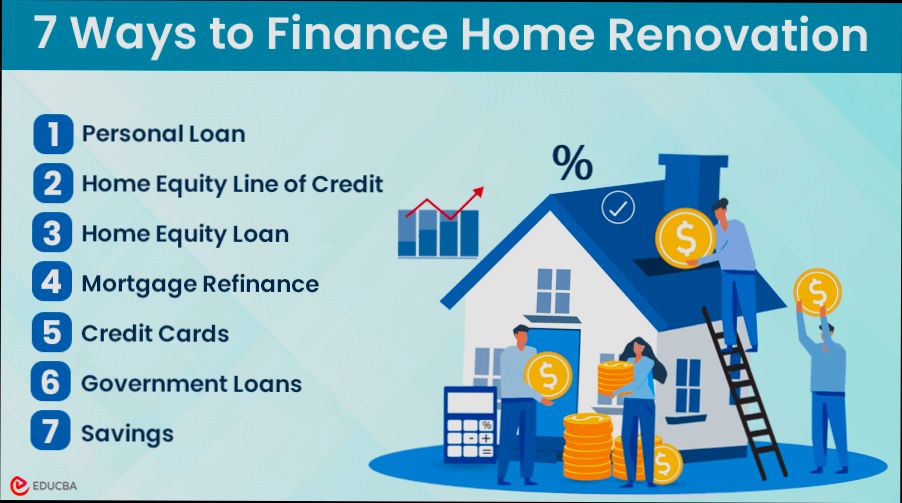
The Impact of Interest Rates on Renovations
Understanding how interest rates affect home renovations is crucial for homeowners looking to finance projects effectively. As interest rates fluctuate, they can dramatically change the cost of borrowing, which directly impacts your renovation budget.
Higher interest rates can significantly increase your overall renovation costs. For instance, a 1% increase in interest rates on a loan of $100,000 could mean paying an additional $20,000 over a 30-year mortgage term. This hike can force you to reevaluate your renovation plans or seek out alternative financing options.
Key Points to Consider
- Budget Constraints: If interest rates rise, renovation budgets will likely shrink. Homeowners must factor in the additional monthly payments that accompany higher rates, potentially limiting the scope of their projects.
- Timing Is Everything: With interest rates historically volatile, the timing of your renovation can greatly affect your finances. For instance, when rates are low, it may be more advantageous to embark on larger projects rather than waiting, which could lead to increased costs later.
- Cost of Alternative Financing: If you opt for alternative financing methods, such as personal loans or credit cards, the interest rates can be much higher than traditional mortgage rates. This can result in steep costs if you plan to finance renovations through these routes.
| Interest Rate | Loan Amount | Monthly Payment | Total Interest Paid |
|---|---|---|---|
| 3.0% | $50,000 | $211 | $15,103 |
| 4.0% | $50,000 | $242 | $20,979 |
| 5.0% | $50,000 | $277 | $26,789 |
Real-World Examples
- Case Study: The Rodriguez Family
The Rodriguez family wanted to renovate their backyard but put it on hold due to rising interest rates from 3.5% to 4.5%. This decision saved them over $10,000 compared to commencing renovations in a more favorable borrowing environment.
- Case Study: The Thompson Couple
The Thompsons noticed a jump in their proposed loan interest from 3.25% to 4.0% and opted to do essential renovations first, choosing to wait for potentially lower rates before tackling larger projects. This adjustment helped them save and plan better for their dream kitchen.
Practical Implications
- Assess Your Financial Situation: Regularly monitoring interest rates can help you determine the best times to borrow. Understanding these trends enables you to strike when rates are favorable.
- Project Prioritization: High-interest rates might push you to prioritize essential renovations over luxury upgrades. Take the opportunity to differentiate between needs and wants based on your financial capacity.
- Explore Lock-In Rate Options: Some lenders allow you to lock in an interest rate before finalizing your financing. This can be a smart strategy when anticipating future rate increases.
Fact: A 1% increase in interest rates can lead to an additional $8,000 to $10,000 in costs over the life of a typical 30-year renovation loan. Acting swiftly when rates are low can save significant money on your renovation projects.
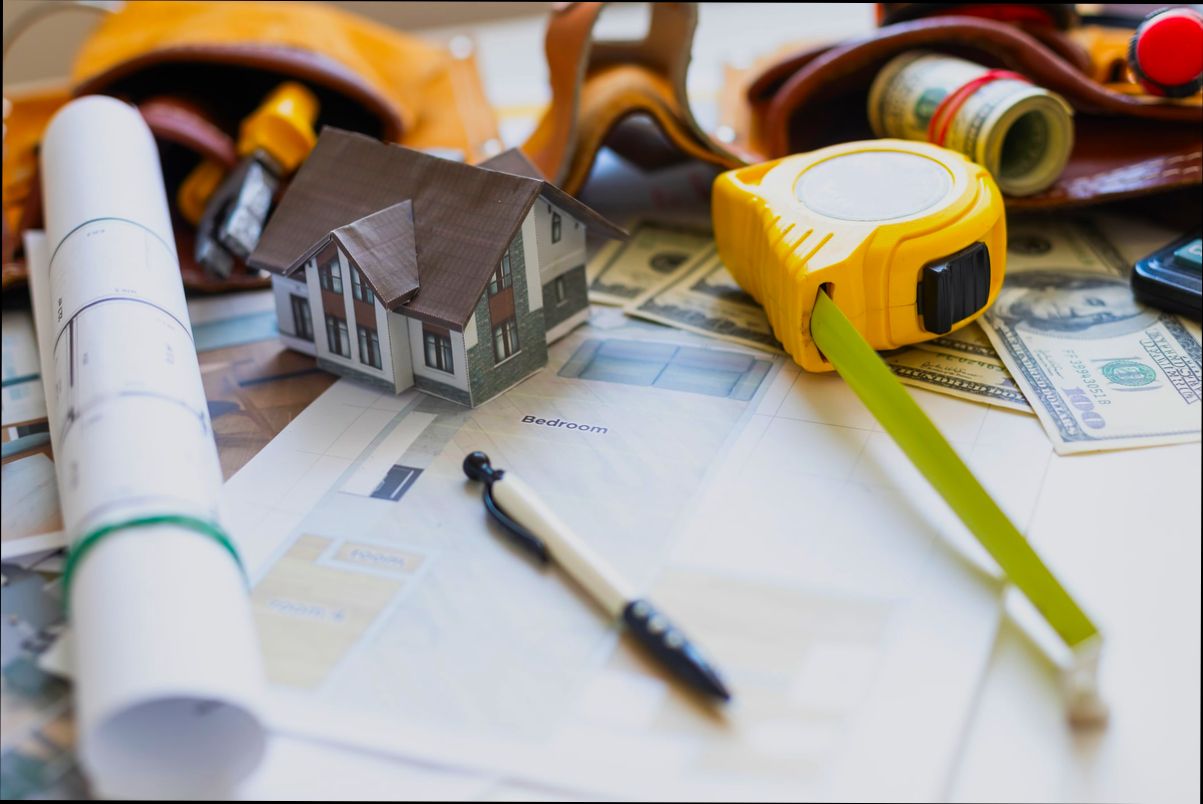
Advantages of Using Home Equity Loans
When you’re considering financing home renovations, tapping into your home’s equity can be an extremely advantageous route. Home equity loans offer unique benefits that can help you fund your dream space while potentially maximizing your investment.
Lower Interest Rates
One of the most appealing aspects of home equity loans is their competitive interest rates. Typically, these rates are lower than unsecured loans and credit cards. For example, homeowners may find rates between 3% and 6%, which can result in substantial savings over the life of the loan. This lower borrowing cost can make a big difference in how much you ultimately pay for your renovations.
Potential Tax Deductions
Another significant advantage of home equity loans is the potential for tax deductions on interest payments. If you use the loan for home improvements that substantially increase your home’s value, you may be able to deduct the interest on your taxes. This can effectively reduce your overall renovation costs. Always consult a tax advisor to determine your eligibility, as tax laws can change.
Fixed Loan Amount and Predictable Payments
Home equity loans typically offer a fixed loan amount and fixed interest rates, which means you know exactly what your monthly payments will be. This predictability makes budgeting easier, allowing you to plan your finances without unexpected surprises. For renovations that extend over several months, knowing your repayment terms can provide peace of mind.
Leverage for Larger Projects
Home equity loans can provide you with access to a larger sum of money for substantial renovation projects. If you’re looking to undertake significant upgrades, such as remodeling your kitchen or adding an extension, the equity in your home could offer you the funds you need. This is particularly useful for projects that might be too costly for smaller personal loans or credit cards.
| Feature | Home Equity Loans | Personal Loans | Credit Cards |
|---|---|---|---|
| Average Interest Rate | 3% - 6% | 7% - 36% | 15% - 25% |
| Tax Deductible | Yes | Typically no | No |
| Fixed Payments | Yes | Varies | Minimum payments fluctuate |
| Loan Amount Availability | Larger amounts | Moderate amounts | Typically lower amounts |
Real-World Example
Consider the case of the Smith family, who used a home equity loan with a 4% interest rate to finance their bathroom remodel. They needed $30,000, which they accessed through their accumulated equity. Their monthly payments were predictable, helping them stay within their budget. Plus, they could deduct a portion of the interest on their taxes, effectively reducing their renovation costs.
Practical Insights
- Evaluate Your Equity: Before applying for a home equity loan, assess your home’s value and outstanding mortgage balance to determine how much equity you can leverage.
- Consider Project Scope: Identify the scope of your renovation projects to decide how much you will need. This can help you choose the right loan terms and prevent over-borrowing.
- Stay Informed On Rates: Keep an eye on interest rates, especially local market fluctuations. Timing your loan application with favorable rates can further improve your financial outcome.
Explore the advantages of using home equity loans as a financing option. They not only offer competitive rates but can also provide predictable payment terms, tax benefits, and access to larger funds for your renovation needs.
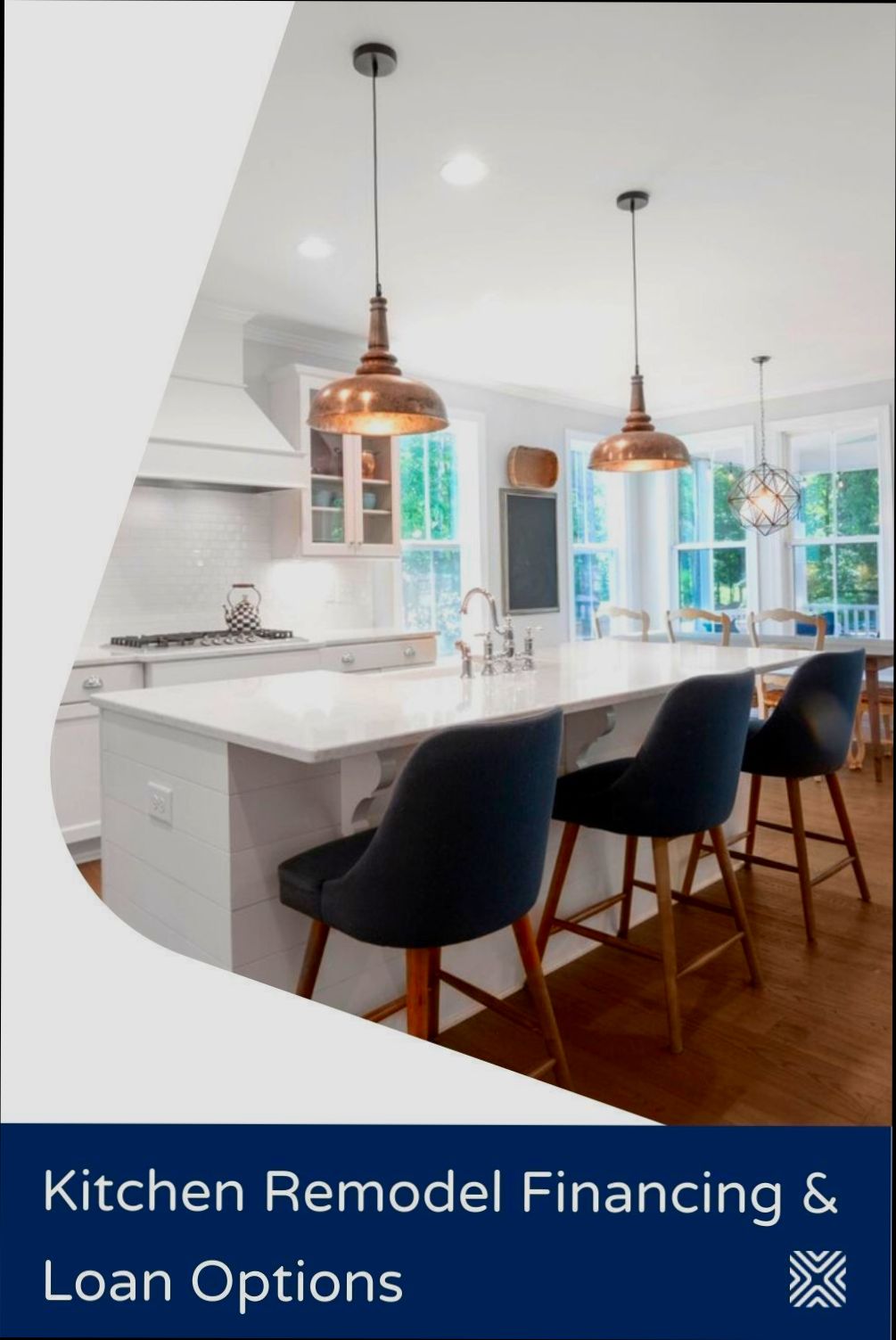
Data-Driven Insights on Renovation Costs
When it comes to planning your home renovation, understanding the costs associated with different types of projects is vital. Relying on data-driven insights can help you budget effectively, avoid financial pitfalls, and achieve your desired results within a reasonable time frame.
Key Points on Renovation Costs
- Average Costs: Data shows that kitchen remodels can range from $15,000 to $50,000, depending on the scope and materials chosen. Bathrooms follow closely, averaging between $10,000 and $30,000. Living spaces, on the other hand, can vary widely, with costs per square foot generally between $100 and $200.
- Regional Variability: Renovation costs can differ drastically by location. For example, homeowners in metropolitan areas might pay up to 30% more for similar renovations compared to those in rural settings. In the Northeast, the costs for a full renovation average around 15% higher than the national average.
- Material Costs: Utilizing high-quality materials can increase renovation expenses significantly. For instance, homeowners who choose quartz countertops over laminate can expect to see a rise in their kitchen costs by around 20% to 30%.
- Labor Expenses: A major portion of your renovation budget will go towards labor, with costs generally accounting for about 20% to 35% of the total budget. Skilled tradespeople can charge upwards of $50 per hour, depending on the complexity of the work.
| Renovation Type | Low-End Costs | High-End Costs | Average ROI |
|---|---|---|---|
| Kitchen Remodel | $15,000 | $50,000 | 75% |
| Bathroom Remodel | $10,000 | $30,000 | 65% |
| Living Room Update | $5,000 | $20,000 | 60% |
Real-World Examples
- Case Study: The Lee Family: The Lees undertook a kitchen renovation that totaled $40,000. They chose mid-range products but opted for custom cabinetry, illustrating how different choices can significantly impact overall costs. They ultimately saw a 70% return on their investment when they sold their home.
- Case Study: The Patterson Couple: Opting for a bathroom upgrade, the Pattersons invested $22,000 in a complete overhaul, focusing on luxury finishes. Their choices pushed the cost higher than average, but they found that such luxury enhancements typically attract buyers, often recouping 60% to 65% of their expenditure.
Practical Implications
Understanding these data points allows you to make informed decisions about what renovations to prioritize based on your budget and expected returns. By breaking down your project into detailed components, you can better anticipate costs and identify areas where you might save money without sacrificing quality.
- Budget Wisely: Allocate at least 10% of your total renovation budget for unexpected expenses, which are common in renovation projects.
- Choose Wisely: Prioritize renovations that will provide the best return on investment based on local market conditions; high-demand renovations often yield better financial outcomes.
- Consult with Professionals: A detailed consultation with contractors can offer a more tailored assessment of potential renovation costs specific to your property, ensuring you’re financially prepared.
Investing in your home through renovations should be a strategic decision informed by reliable data. By leveraging these insights, you enhance the likelihood of a successful and financially sound renovation project.
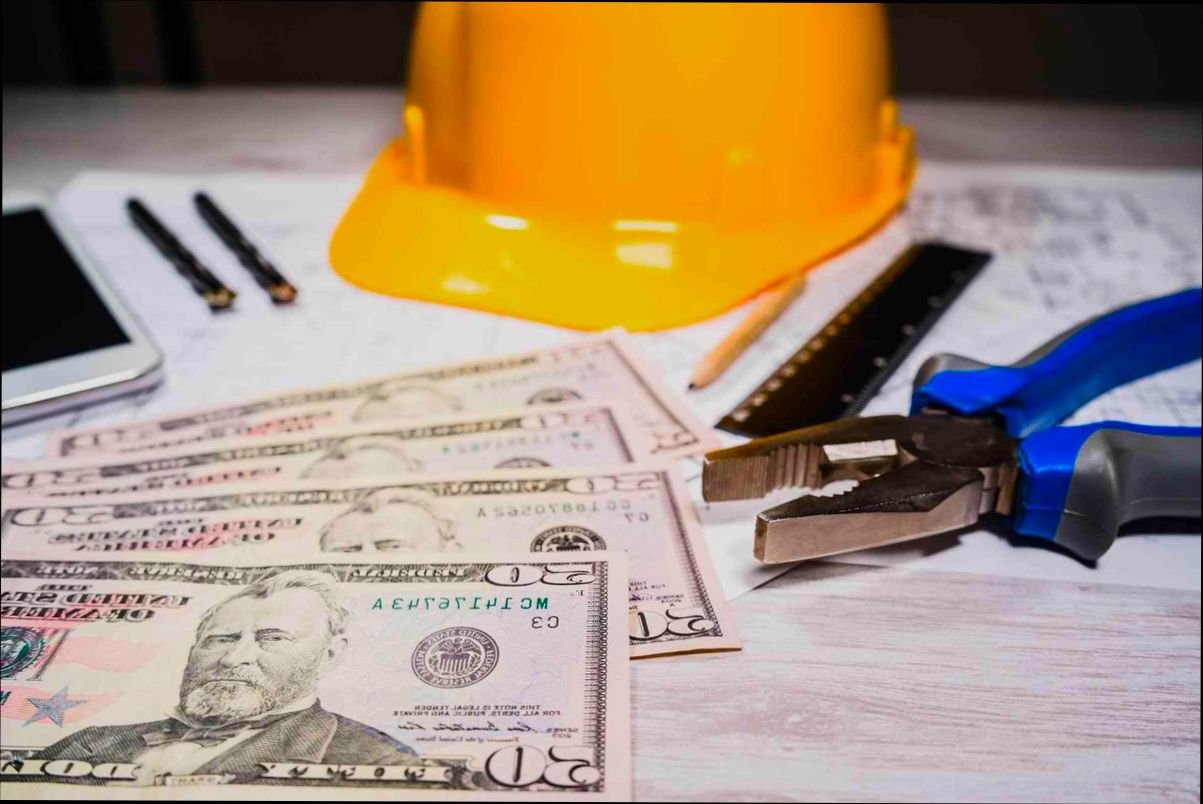
Maximizing Value through Smart Financing
When it comes to financing your home renovation, maximizing value through smart financing strategies can have a profound impact on your overall investment. By leveraging various financial options effectively, you can ensure that your renovation not only enhances your living space but also increases your home’s value.
Key Points for Smart Financing
1. Interest Rate Awareness: Understanding the prevailing interest rates is vital. For instance, if you secure a loan at a lower interest rate, you can save substantially over time. A 1% difference in interest rates can save a homeowner up to 20% on interest payments over the life of a 30-year mortgage.
2. Choosing Between Financing Options: Evaluate loans that best suit your needs. For example, renovation loans with low fixed rates can be more beneficial than variable-rate loans, which may increase over time and affect your repayment capacity.
3. Credit Score Evaluation: Your credit score plays a critical role in determining the financing conditions you receive. A higher credit score can afford you lower rates and potentially thousands of dollars in savings across the duration of the loan.
4. Budget Management: Allocate your budget wisely. It’s crucial to have a clear budget before beginning renovations. Research shows that maintaining strict budget control during renovations can decrease overall costs by up to 15%.
Comparative Table of Financing Options
| Financing Option | Average Interest Rate | Potential Savings | Ideal Use Case |
|---|---|---|---|
| Fixed-Rate Renovation Loan | 3.5% | Up to 20% in saved interest | Long-term renovations with fixed budgets |
| Home Equity Line of Credit (HELOC) | 4.0% | 10-15% based on credit score | Flexible, ongoing projects needing adjustments |
| Credit Cards (0% APR Intro Offers) | 0% (initial period) | Immediate cash flow for small projects | Quick, minor renovations or emergency fixes |
Real-World Examples
- The Thompson Family: They opted for a fixed-rate renovation loan at a 3.5% interest rate. By structuring their loan effectively, they managed to save approximately $15,000 over 15 years compared to variable-rate offers they initially considered.
- The Ramirez Couple: Utilizing a HELOC, they funded their renovation with a 4% interest rate. With a strong credit score, they received better terms, ultimately saving nearly $5,000 in interest compared to traditional loans for similar projects.
Practical Implications for Homeowners
As you finance your home renovation, consider these actionable insights:
- Regularly check your credit score and improve it before seeking financing; even a small increase can result in significantly better loan terms.
- Create an itemized renovation budget that includes contingencies. A well-planned budget can prevent overspending, saving you vital resources.
- Stay informed about interest rate trends. Timing your loan acquisition when rates dip can maximize your financial benefits.
Aim to leverage these smart financing strategies, ensuring that your investment translates into both enhanced living spaces and increased market value.





